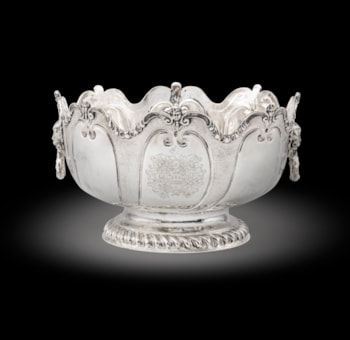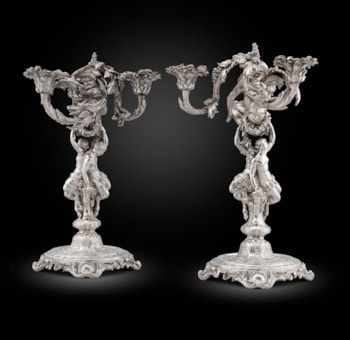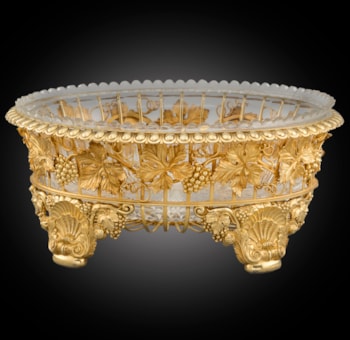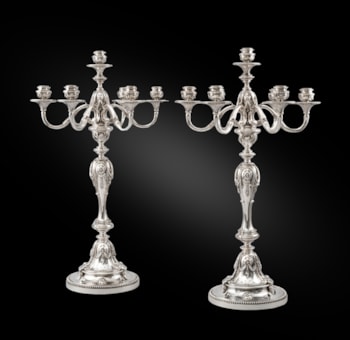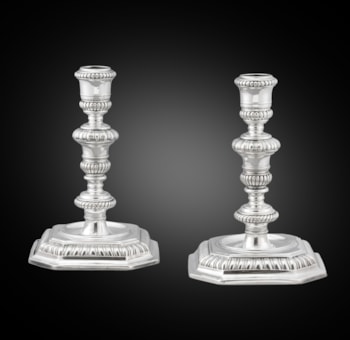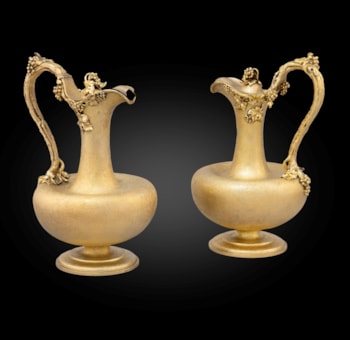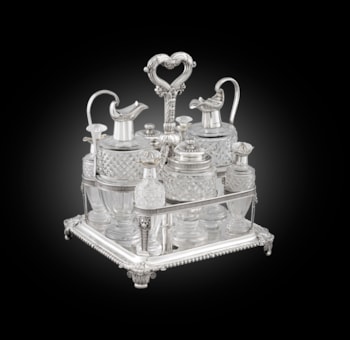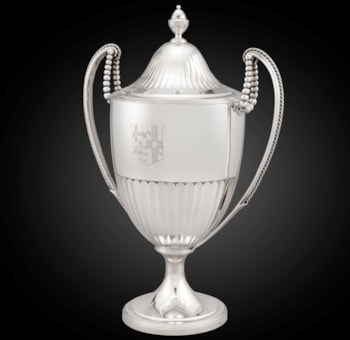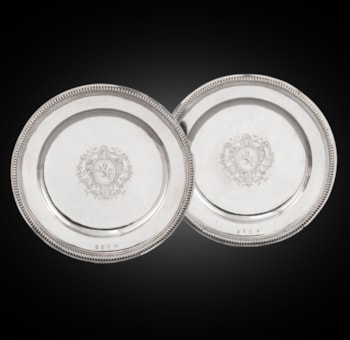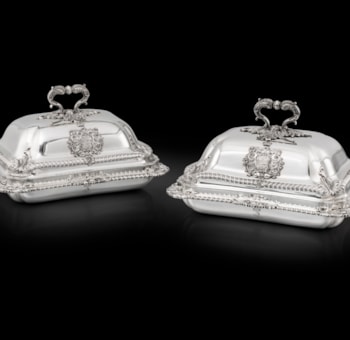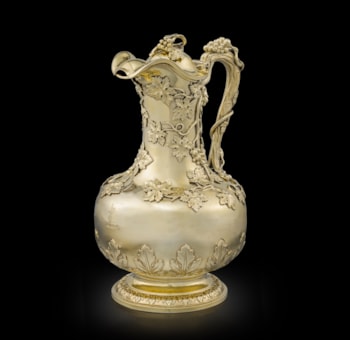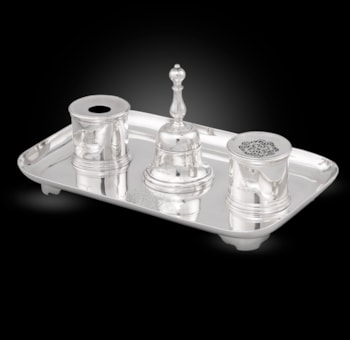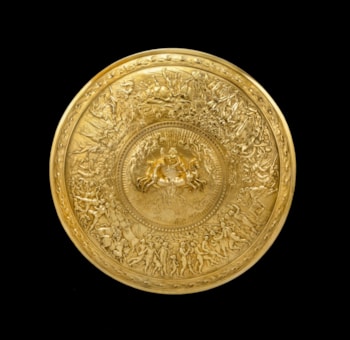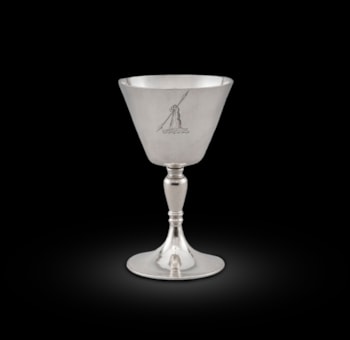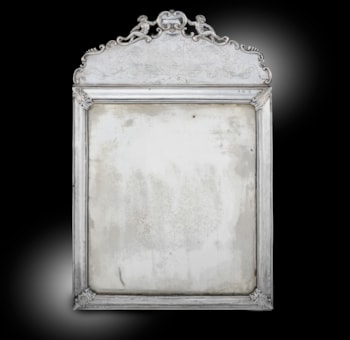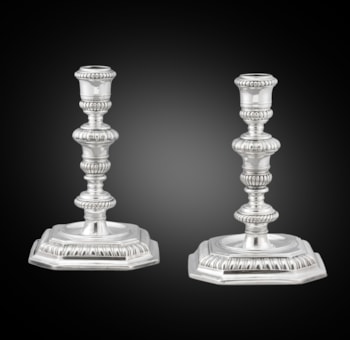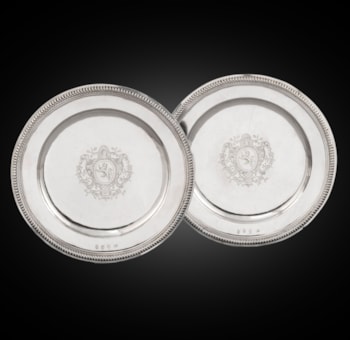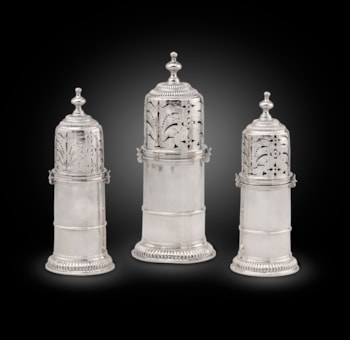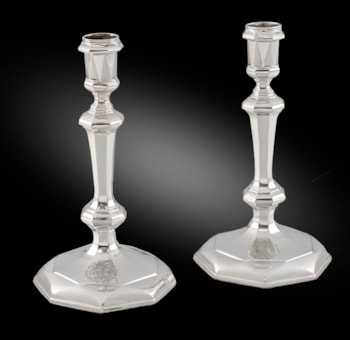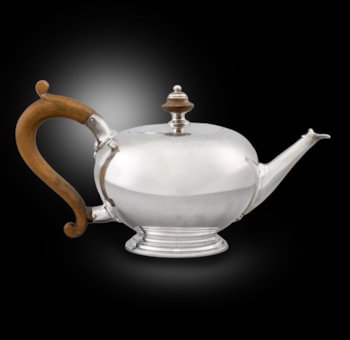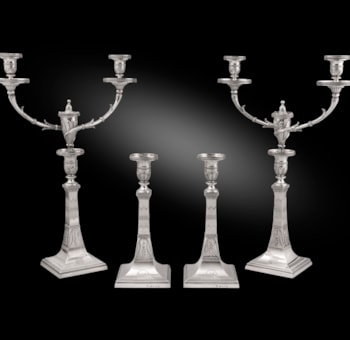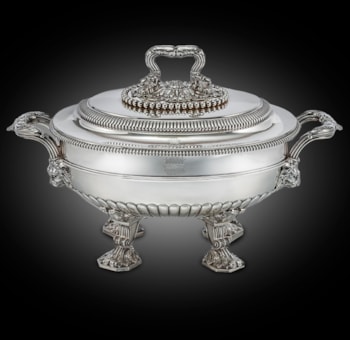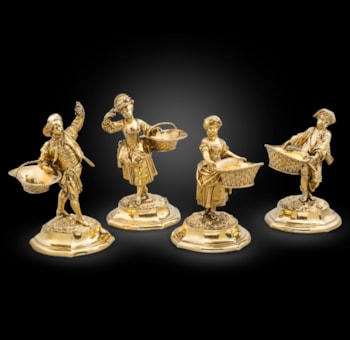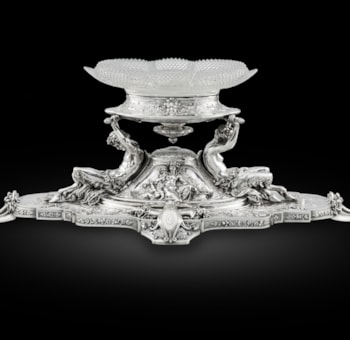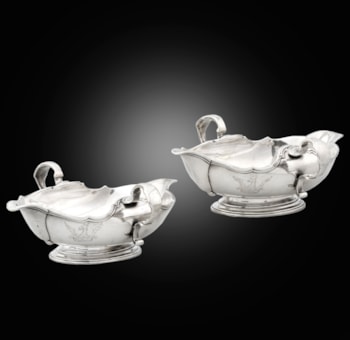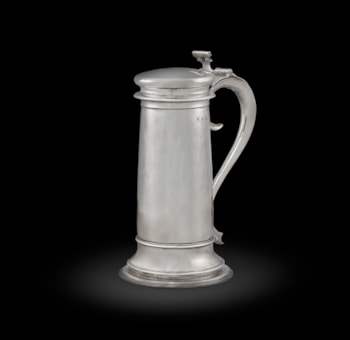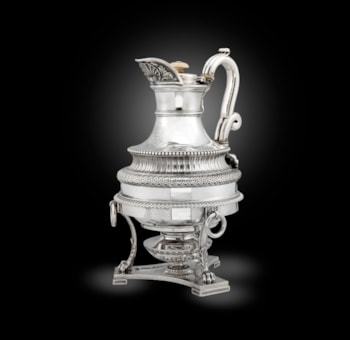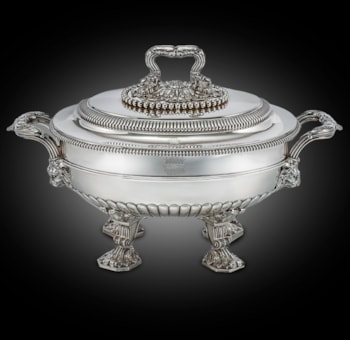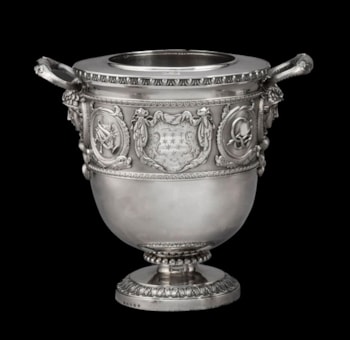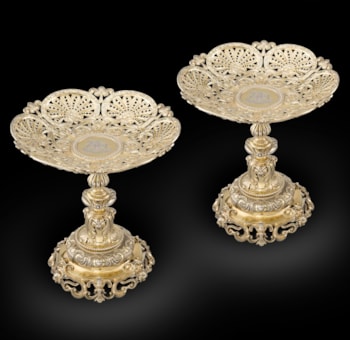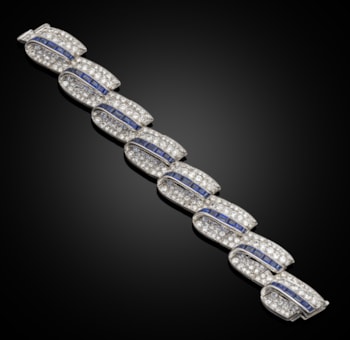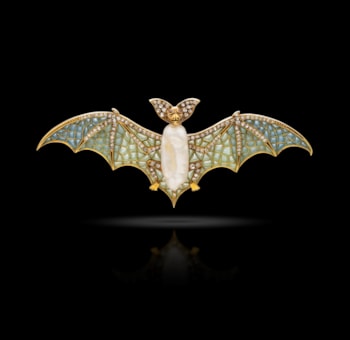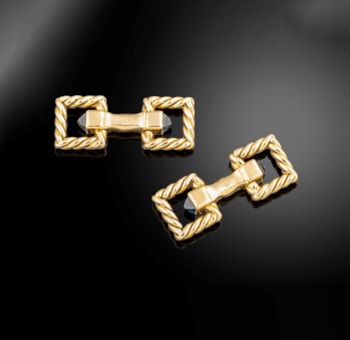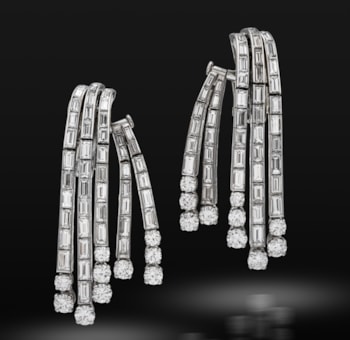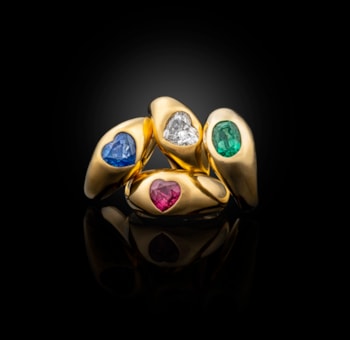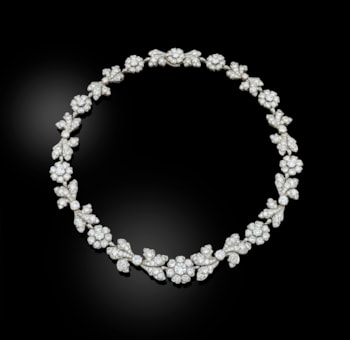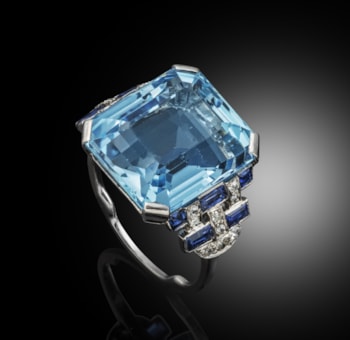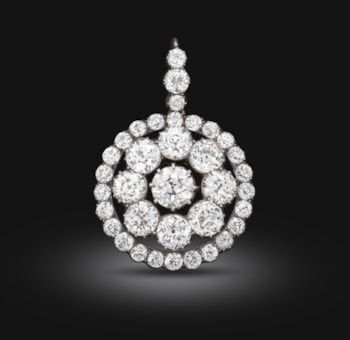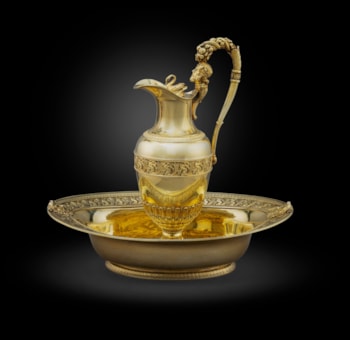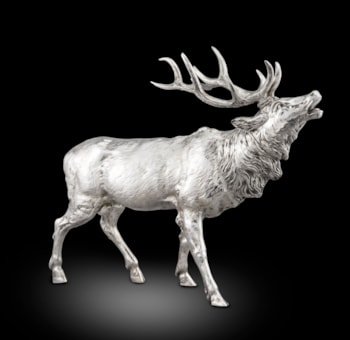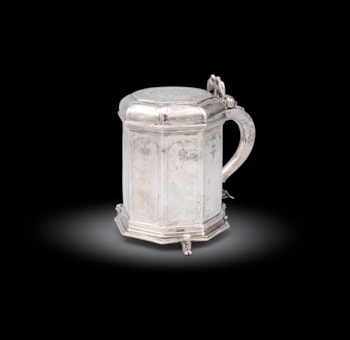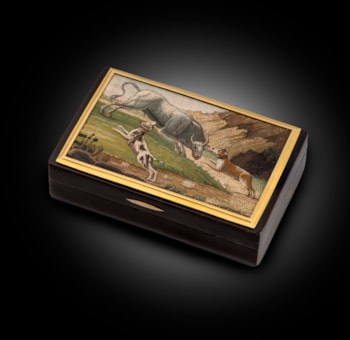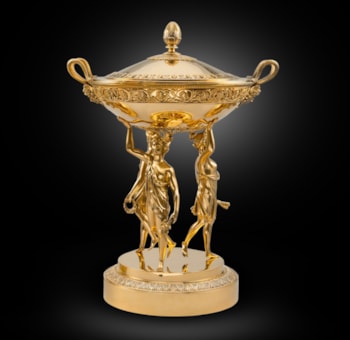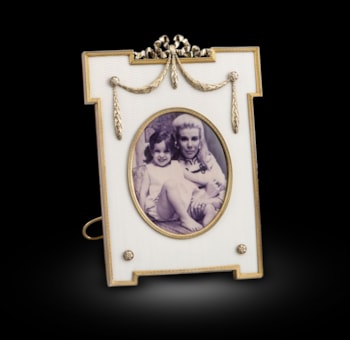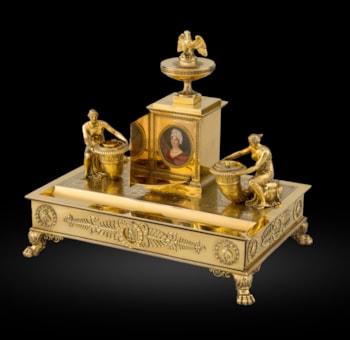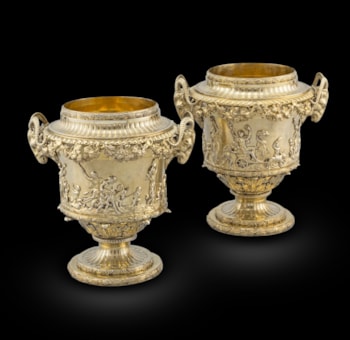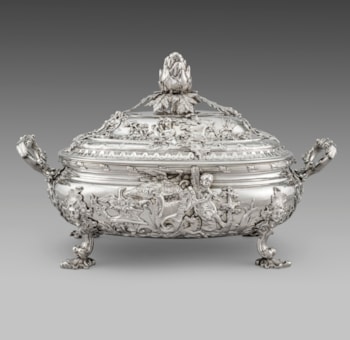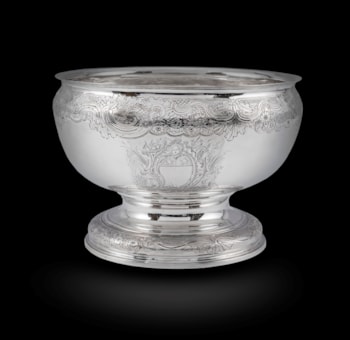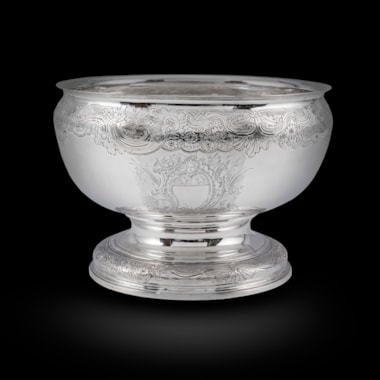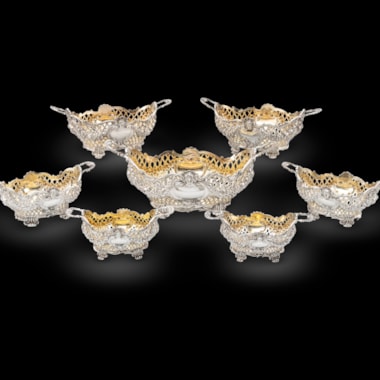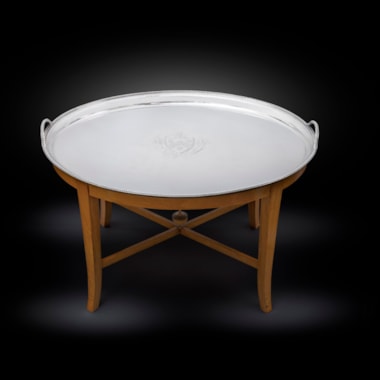Under the direction of Edward C. Moore and lead silversmith Charles Grosjean, Tiffany's' silver department invented a method to laminate precious metals and pushed the coloration further than had been done before.

Tiffany & Co. Mokume Clock, c. 1880
Tiffany's method used four layers of:
-fine (pure) copper,
-fine gold,
-fine silver (925/1000 sterling silver was occasionally used), and
-an "Alloy," which typically included gold and silver.
These layers were carefully soldered together then rolled to a thinness of 1/8 of an inch. This layer was cut into three pieces, which were soldered to each other and hammered and rolled thin again. This process was repeated until the Mokume was 36 layers thick. Mokume was annealed but never pickled, unless masked by protective varnish.

Tiffany & Co. Mokume patterns, courtesy Gorham Mfg. Co. Archives, John Hay Library, Brown University
After creating these micro-layers, silversmiths would cut the piece to shape and then drill, carve, or gouge the surface to create patterns. "Drilled Metal gives a succession of circles...which may be used for butterfly wings or cut with a chisel breaking up the circles produces a pleasing effect." Other motifs, such as imitation of tortoiseshell, could be created as well.

Mokume butterfly on Tiffany & Co. mixed metals tea caddy
Lastly, the Mokume was patinated to give it the final colour. Different alloys produced different colours after the final patination. For instance, pure copper patinated red, Lake Superior copper patinated brown to red. When the copper was alloyed with iron, it produced a reddish-brown and purple mahogany like colour. After the final bath, the Mokume work provided a "veneer" like effect.
Occasionally, brass was used as one of the layers. While difficult to solder because of its alloys, it "renders a greater contrast in colour than is supposed, producing a greenish tint that is of a very delicate nature."

Tiffany & Co. Mokume detail
Tiffany's Mokume was the most difficult to create and most exotic of the mixed metals made during the aesthetic movement in the United States; it produced colours and patterns unlike anything made before or after. Today, when seen with its original shades of black, red, green, silver, and gold, it remains an extraordinary achievement of silversmithing.
Bibliography:
Charles T Grosjean (attr.), Ledger (Technical Book of Processes and Metallurgy), The Gorham Archives, John Hay Library, Brown University.
Founded in 1838 by Charles Lewis Tiffany (1812–1902) and his partner, J. B Young, as Tiffany & Young, a “fancy goods” store on Broadway in New York. Success was swift and sure, and another partner, Ellis, joined in 1841. In the 1940s, Charles Lewis Tiffany introduced the now iconic signature colour blue.
Charles Lewis Tiffany took sole control in of the company in 1853 when the business was renamed Tiffany & Co. In 1870, the business moved to a palatial store in Union Square, and flourished through the 1870s, becoming the destination for New York’s fashionable and wealthy elite. Developing its own design identity, Tiffany was known for Japonesque-style silverware and for diamond jewellery: Charles Tiffany became the “King of Diamonds.”
In 1878, the company purchased the Tiffany diamond, an immense canary yellow stone from the new South African deposits. Once cut, the diamond weighed 128.54 carats. In 1886, the Tiffany setting for diamond solitaire rings was introduced. Tiffany won numerous awards at international exhibitions: in Paris, in 1889, the naturalistic jewels designed by Paulding Farnham, later director of jewellery, showcased American themes and used materials, gemstones and pearls that were sourced by George Frederick Kunz, Tiffany’s celebrated chief gemmologist.
On his father’s death in 1902, Louis Comfort Tiffany took over the reins, becoming Tiffany’s first design director. The company’s American aesthetic blossomed through the Art Deco years of the 1920s and 30s, evolving into the late 30s and 40s Retro or cocktail style, which triumphed at the 1939 World’s Fair.
Tiffany & Co moved to its current global flagship store on Fifth Avenue, forever associated with Audrey Hepburn, as Holly Golightly, in Breakfast at Tiffany's (1961). In 1956, Chairman Walter Hoving invited the extraordinarily talented designer-jeweller, Jean Schlumberger, to open his own salon in the store, the first of a series of named designers.
Introduced by design director John Loring, whose eye and vision shaped Tiffany's style in the late 20th century, jewellery designers Elsa Peretti and Paloma Picasso joined in 1974 and 1980, respectively.
You May Also Like




